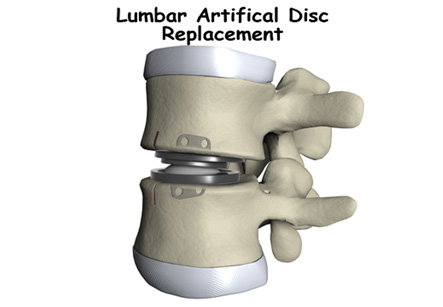Artificial Disc Replacement
Introduction
Artificial Disc Replacement (ADR) is a surgery that is undertaken in patients with severe and long term back pain. In many of these patients this surgery is performed to replace the damaged disc – a fleshy cusion like tissue that lies between two vertebrae – with an artificial one.
Surgeons normally fit the artificial disc into the spine through a small cut near the navel or belly button.
Normally the vertebrae are stacked over each other to form the back bone or spine. These spongy discs lie in between these bones to act as shock absorbers. These make the back more supple and flexible and prevent back damage due to twists and turns. These discs may be damaged due to infection, injury or tumors. The artificial discs are similar to that in the body. They are made from soft plastic between two metal plates.
We have all the information you need about public and private clinics and hospitals that provide spinal surgery in Iran, Islamic Republic Of with the best quality and lowest possible prices

Surgical Technique
Artificial Disc Replacement surgery is a short procedure generally performed under local anesthesia that renders the operative area numb. Sometimes the surgery may be performed under general anesthesia that renders the patient unconscious. Once anesthesia is performed the area of the operation is cleansed with an antiseptic. Usually a small keyhole is made over the abdomen. Surgeons normally fit the artificial disc into the spine through a small cut near the navel or belly button. This is called a keyhole surgery. It lessens complications and hastens recovery that traditional open surgeries that involve opening up of the back and exposing the damaged disc. After the operation the surgical incision is closed using sutures and the area is bandaged.
Follow up and post operative considerations
Usually recovery is fast but the success rate of the procedure is similar to spinal fusion. Spinal fusion surgery involves fusing two of the affected vertebrae using bone grafts and metal implants.
A damaged disc can cause back pain. For example, the damaged part of a disc might press on the nerves coming out of the spinal cord. If it does, it causes pain and muscle weakness. Thus replacement of the disc with an artificial one may prevent such inflammation and pain. This may not happen in spinal fusion surgery. Spinal fusion surgery only serves to join the vertebrae rather than remove the root cause of the pain.
Common complications after artificial disc replacement surgery include pain for which pain killers may be prescribed. Bleeding, infections and other risks are also common after the operation. Activity may be restricted for the initial few days after recovery. There may be a need for a back brace after surgery to prevent the artificial disc from being displaced. Other complications include risk of infection, nerve damage or blood vessel injury etc. These risks are rare and many of them can be effectively managed. Nerve damage may lead to numbness and sometimes paralysis. Physical therapy may be needed after surgery to prevent such complications.